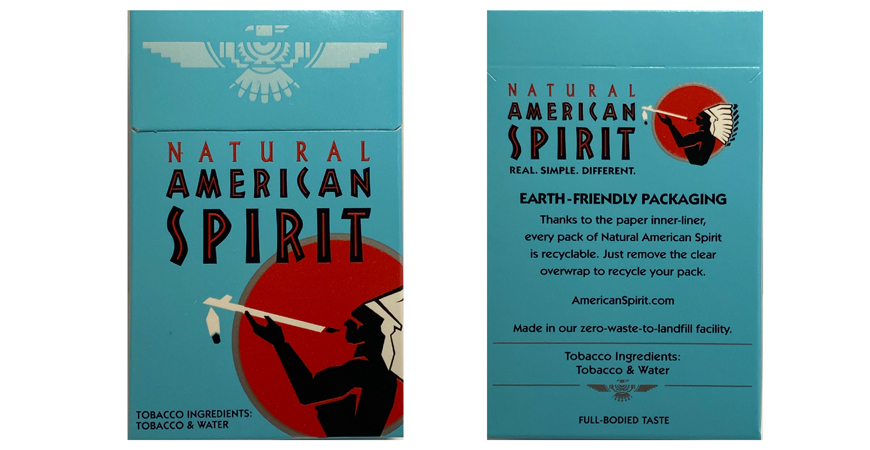Table of Contents
Throughout this moment, Indigenous Americans were limited to more highly habit forming and hazardous types of business tobacco; addiction to business cigarette, such as cigarette smoking, became much more extensive among Indigenous individuals. In Minnesota, 59 percent of American Indian grownups smoke (TTUP, 2013), contrasted to 14. 5 percent of Minnesota's overall population (BRFSS, 2017).

According to findings from the Wisconsin American Indian Youth Cigarette Survey (2008-2009), the use of typical tobacco in events is a protective factor versus cigarette misuse. Youth who use standard tobacco in event were much less likely to have ever before smoked business tobacco or to have actually smoked commercial tobacco in the last 1 month than those who had not.
Top Guidelines Of History Of Tobacco
They likewise have management opportunities, organize community social occasions, and involve with various other Indigenous American organizations in the Twin Cities as part of their larger community. A recent Ain Dah Yung neighborhood study verified that young individuals are drawn to the program partly due to the neighborhood links and assistance systems that prosper here.
When she goes to collect in the yard, or goes hunting, she offers the cigarette in thanks. "For that pet offering their spirit to you, for that plant offering the gift of food, for their present of life and nutrition, you provide your tobacco. I wish to promote typical tobacco since it maintains me in equilibrium with the pets and the plants and the beings that are around us (cultural significance of native smokes)." De, Cory says the Ninjanisag program is expanding.
Indigenous Sacred Plants: Tobacco - The Facts

When I take a look at a youngster I collaborated with when he was nine years old and now they're 20 something, and have youngsters, and they're living this life, we understand that what we do works." Download this tale: Typical tobacco usage connects Indigenous youth to culture, area, and health (PDF) The Tobacco-Free Communities Give Program funds neighborhood area grants and technical aid and training gives that aim to reduce and prevent youth tobacco use and address tobacco-related variations in Minnesota by advertising community-driven tobacco avoidance and control tasks and methods.
The manidog (spirits) are said to be very warm of cigarette and that the only means they could obtain it was from the Indians, either by smoke from a pipe or by offerings of completely dry tobacco. According to practice, the Indians got cigarette as a present from Wenebojo who had taken it from a mountain titan and afterwards provided the seed to his brothers.
Racial/ethnic Minorities - Smoking Cessation Leadership Center Fundamentals Explained
Dry tobacco was placed at the base of a tree or hedge where medicine was collected, and a pinch was thrown in the water prior to each day of basmati rice event to assure tranquil climate and a bountiful harvest - cultural significance of native smokes. Prior to laying out in a canoe, a secure return was guaranteed by using tobacco on the water
Tobacco was put at graves as an offering to the left spirit. Before all spiritual ceremonies, tobacco was offered to the spirits.
Heart Disease And American Indians/alaska Natives Can Be Fun For Everyone
When a witch doctor consented to approve a customer's case, he showed it by taking the supplied gift of cigarette. Cigarette additionally sealed peace treaties between people and agreements in between individuals. For such a purpose, the principal usually kept a special pipeline with a lengthy decorated stem. While pipes of this sort have been called "tranquility pipelines," the stem, called a calumet, was really more crucial.
Smoking cigarettes together was additionally a method to seal deals or arrangements between leaders of different teams, and offering a pipeline to someone suggested an end to hostilities. Smoking a pipeline as component of a ceremony or spiritual offering appears to have actually had to do with as common as cigarette smoking it for personal satisfaction.
The Fight To Keep Tobacco Sacred Can Be Fun For Anyone
Kinnickinnick-- different other organic substances, normally red willow-- was blended with strong indigenous cigarette in differing total up to suit the specific cigarette smoker. Individual pipes were small with a short stem. Kinnickinnick (an Ojibwe word) essentially indicates "what is combined," and refers to plant products that Indian individuals blended with cigarette for smoking.
He after that made a drying rack by splitting one of the peeled off stems midway down and opening up completion to form a Y. The opened up section was then woven with criss-crosses of various other split stems to form a grid, and on this, he put the decorations of inner bark. He compelled the rack right into the ground diagonally just over a low fire, so the bark had to do with a foot over the fires and could dry in the heat without being shed.
The Best Guide To Biomolecular Archaeology Reveals Ancient Origins Of ...
Far back, when the Potawatomi still survived the ocean in the eastern and close to their grandpas the Delaware, an old guy had a dream that something phenomenal would grow in his garden which was in a clearing he had made nearby - cultural significance of native smokes. In his desire, he was cautioned never to let any type of females approach his farm, so he reduced trees so they fell down over the stumps and made a natural fencing
His uncles and nephews teased him concerning his yard and asked him exactly how he anticipated a plant of anything when he had actually grown no seed. They teased him a lot that he blew up, and when every person else took place the summertime quest in July, the old man remained at home to tend to his area.
Table of Contents
Latest Posts
Untitled
Untitled
Untitled